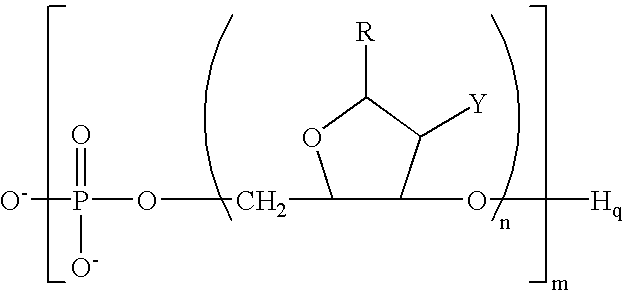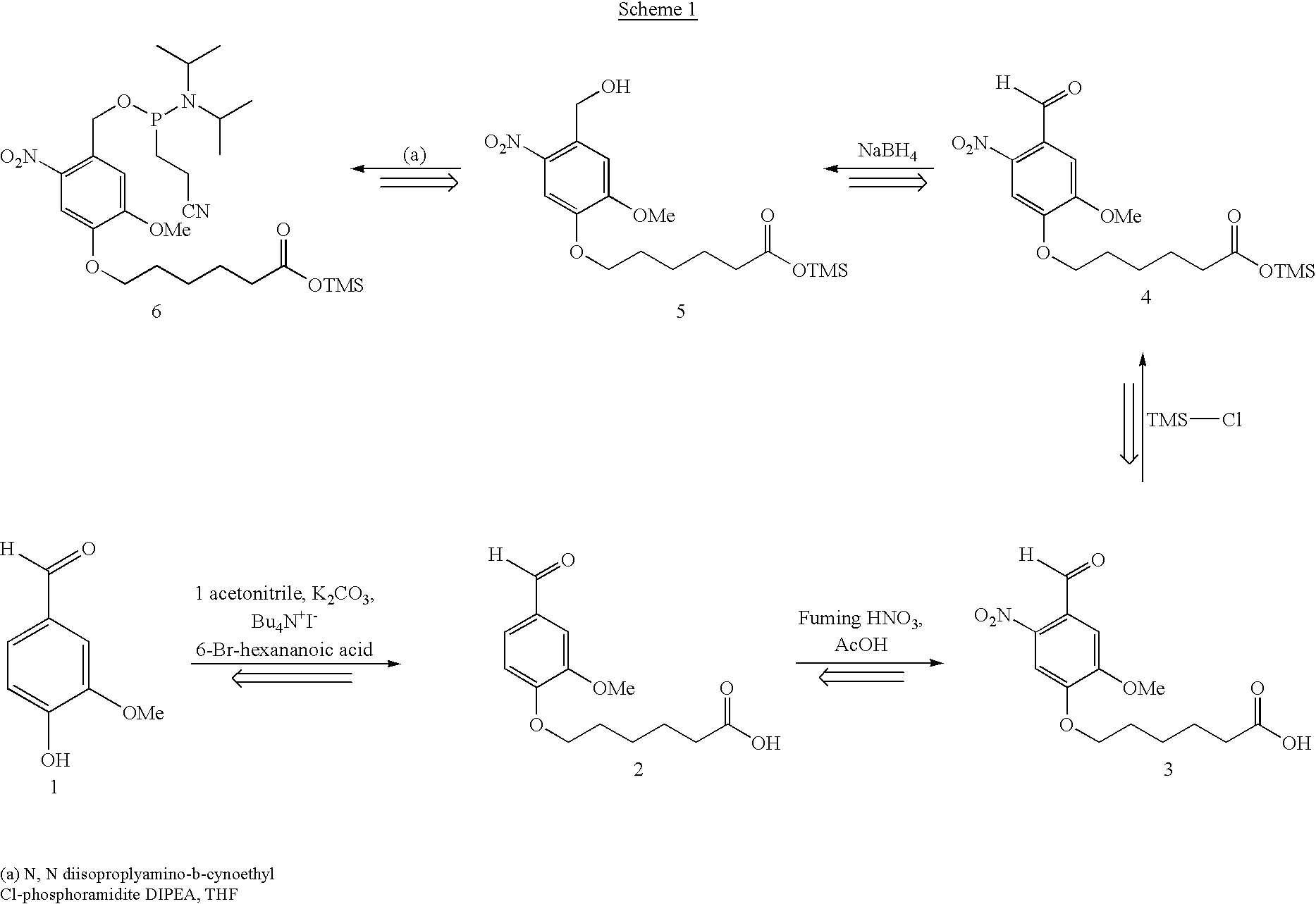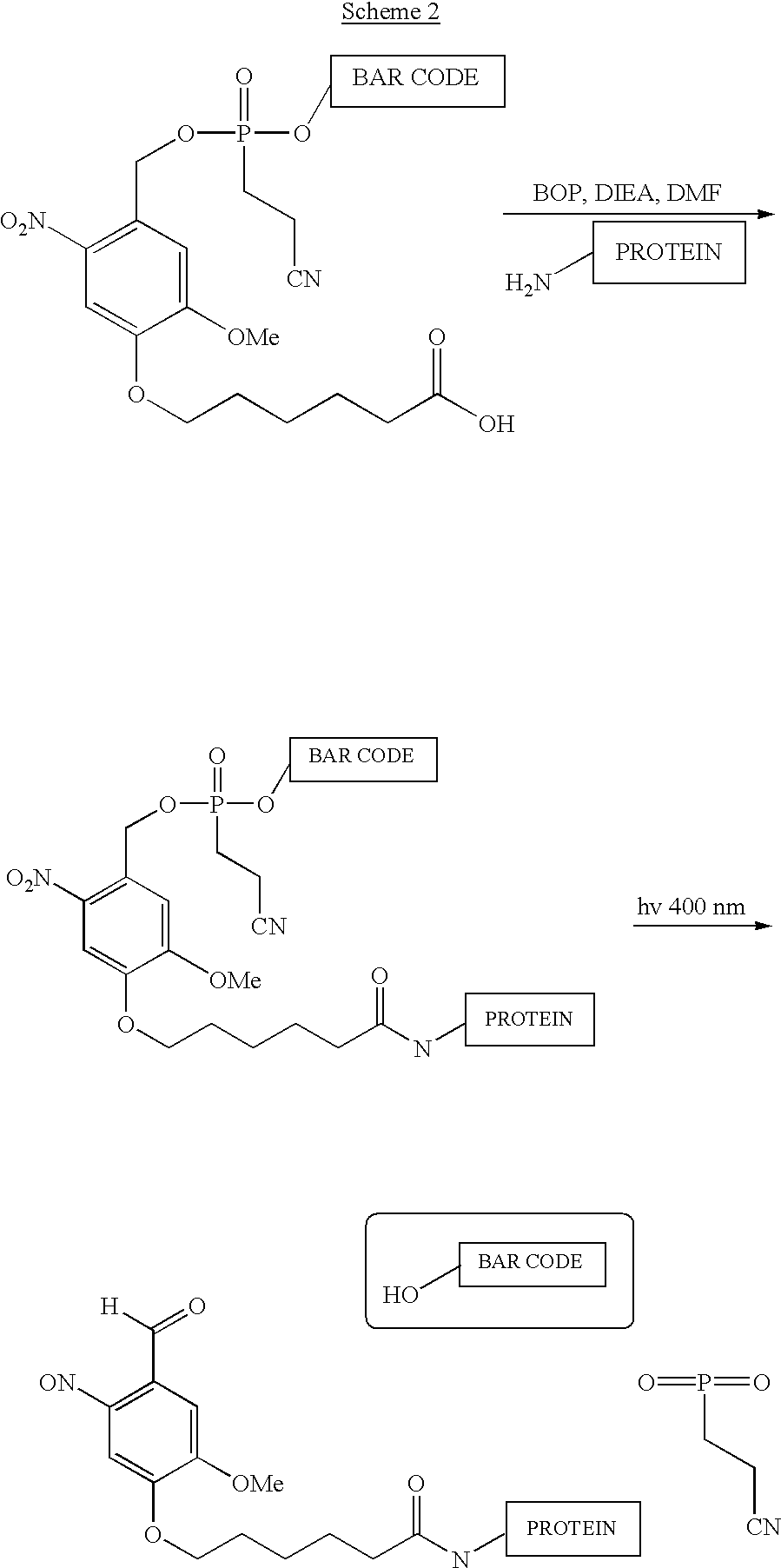Targeted molecular bar codes and methods for using the same
- Summary
- Abstract
- Description
- Claims
- Application Information
AI Technical Summary
Problems solved by technology
Method used
Image
Examples
Embodiment Construction
I. Preparation of a Horizontal Bilayer Containing a Single Nanopore Using a Miniature Horizontal Support
A single channel was inserted into a bilayer on the horizontal aperture as follows:
A. Formation of Diphytanoyl PC / hexadecane Bilayers on a Horizontal Aperture
A miniature support was manufactured as described under `Preparation of Subject Devices` as disclosed in copending application Ser. No. 60 / 107,307 filed Nov. 8, 1998, the disclosure of which is herein incorporated by reference. A lipid bilayer was then formed as follows. The aperture and the Teflon bath holding the aperture were first cleaned for 10 min in boiling 5% nitric acid, then rinsed in nanopure water. Just before use, the aperture and bath were rinsed with ethanol followed by hexane, and then air dried. The aperture was then coated with a thin film of diphytanoyl PC (obtained from Avanti Polar Lipids, Birmingham, Ala.) by applying 5 .mu.l of a 200 .mu.g per mL solution in spectroscopy grade hexane which was then evap...
PUM
| Property | Measurement | Unit |
|---|---|---|
| Length | aaaaa | aaaaa |
| Nanoscale particle size | aaaaa | aaaaa |
Abstract
Description
Claims
Application Information
 Login to View More
Login to View More - R&D
- Intellectual Property
- Life Sciences
- Materials
- Tech Scout
- Unparalleled Data Quality
- Higher Quality Content
- 60% Fewer Hallucinations
Browse by: Latest US Patents, China's latest patents, Technical Efficacy Thesaurus, Application Domain, Technology Topic, Popular Technical Reports.
© 2025 PatSnap. All rights reserved.Legal|Privacy policy|Modern Slavery Act Transparency Statement|Sitemap|About US| Contact US: help@patsnap.com



